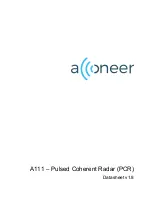
10
TK-780/H
OPERATING FEATURES
4-2. Trunking Format
■
Call indicator
The call indicator can be programmed for each group. In
trunked system, it can be set to respond to a selectable de-
code ID or one of two fixed IDs, except block IDs. When a
call is received with a selectable decode ID, the call indicator
flashes. When a call is received with a fixed ID, the call
indicator lights continuously.
On a conventional system, the call indicator can be pro-
grammed to light for each QT or DQT code. It keeps flash-
ing while a call is being received. It is turned off by pressing
any front panel key.
■
Free system ringback
This feature is available only when a telephone intercon-
nected ID code is selected. If a busy tone sounds when the
PTT button is pressed, the transceiver enters this mode au-
tomatically.
When the PTT button is released, a beep sounds for
400ms to indicate that the mode has been entered. If the
scan is on, it is resumed (the "SCN" mark goes on). When
any repeater becomes available, a ringing tone sounds and
this mode ends.
The mode is terminated when the system, group, scan,
PTT, key is changed.
■
System search
This feature can be programmed to automatically access
other programmed systems when the selected system can-
not be accessed. If an intercept tone sounds when the PTT
button is pressed after setting the mode, the transceiver
has entered the mode.
If the group ID is a telephone interconnect ID, the trans-
ceiver then attempts to access, in succession, other sys-
tems that have a telephone interconnect ID in the revert
group location. If the group ID is a dispatch ID, the trans-
ceiver attempts to access other systems that have a dis-
patch ID programmed in the revert group location.
If there is no system to be accessed, an intercept tone
sounds, the mode is terminated, and the transceiver returns
to the first system. If the access is successful, the mode is
terminated, and the searched system becomes the new se-
lected system (If during scanning, the scan stops).
■
Transpond
This feature can be programmed to turn on and off for
each group. If the ID of the group for which transpond is
enabled is received, two data messages (transmit ID and
turn-off code) are automatically transmitted if the PTT but-
ton is not pressed as a response within the time set (0 to
300 seconds in 1-second increments). If the PTT button is
pressed within the time, the transpond is not preformed.
■
Transmit inhibit
The transceiver can be programmed with a transmit in-
hibit block of ID codes. If an ID code within this block is
decoded the preset time before the PTT button is pressed,
transmission is inhibited. The BUSY indicator lights and a
busy tone sounds until the PTT button is released to indicate
that transmission is not possible (except clear-to talk mode).
Transmission with the group for which the encode ID is
not set is inhibited, and the busy tone is output while the
PTT button is held down, regardless of the clear-to talk set-
ting.
■
Auto TEL
A telephone interconnect call can be made by simply
pressing the key by assigning this feature to the key. This
feature accesses the TEL channel of the available system
automatically.
When the key is pressed, a queue tone is output, and the
“AUTO TEL” appears on the alphanumeric display along
with a flashing handset indicator ( ) to indicate that this
mode has been entered. If the TEL ID is set for the revert
system, the TEL channel of that system is accessed. If all
TEL channels are busy, an attempt is made to access the
TEL channels of another system in which the TEL ID code
has been programmed. It is repeated for 60 seconds until
the access succeeds. If the access succeeds, a dial tone
returns from the repeater. If the key is pressed again when
the queue tone is sounding, this mode is canceled.
If the access fails after 60 seconds, a deny tone is output
and this mode is terminated. When the talk ends, the revert
system/group returns. When the scan mode is effective,
the scan resumes. The Auto TEL feature can be pro-
grammed to turn on or off for each system.
■
ARQ mode
It affects Trunking mode only. Automatic Repeat
reQuest (ARQ) mode is a manner to minimize the air traffic
of data communication. Also, it enables to occupy the
trunking repeater channel fot the data communication pe-
riod.
4-3. Conventional Format
■
“TOT” pre-alert
The transceiver has “TOT” pre-alert timer. This param-
eter selects the time at which the transceiver generates
“TOT” pre-alert tone before “TOT” is expired.
“TOT” will be expired when the selected time passes
from a TOT pre-alert tone.
■
“TOT” re-key time
The transceiver has “TOT” re-key timer. This timer is the
time you can not transmit after “TOT” exceeded. After
“TOT” re-key time expired you can transmit again.











































